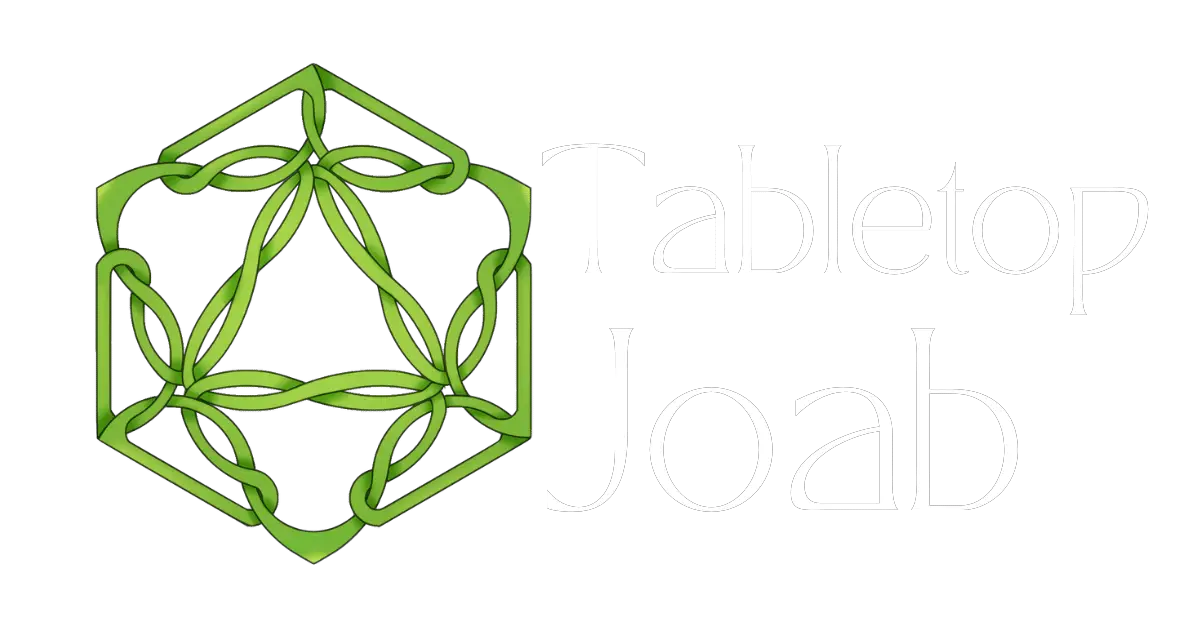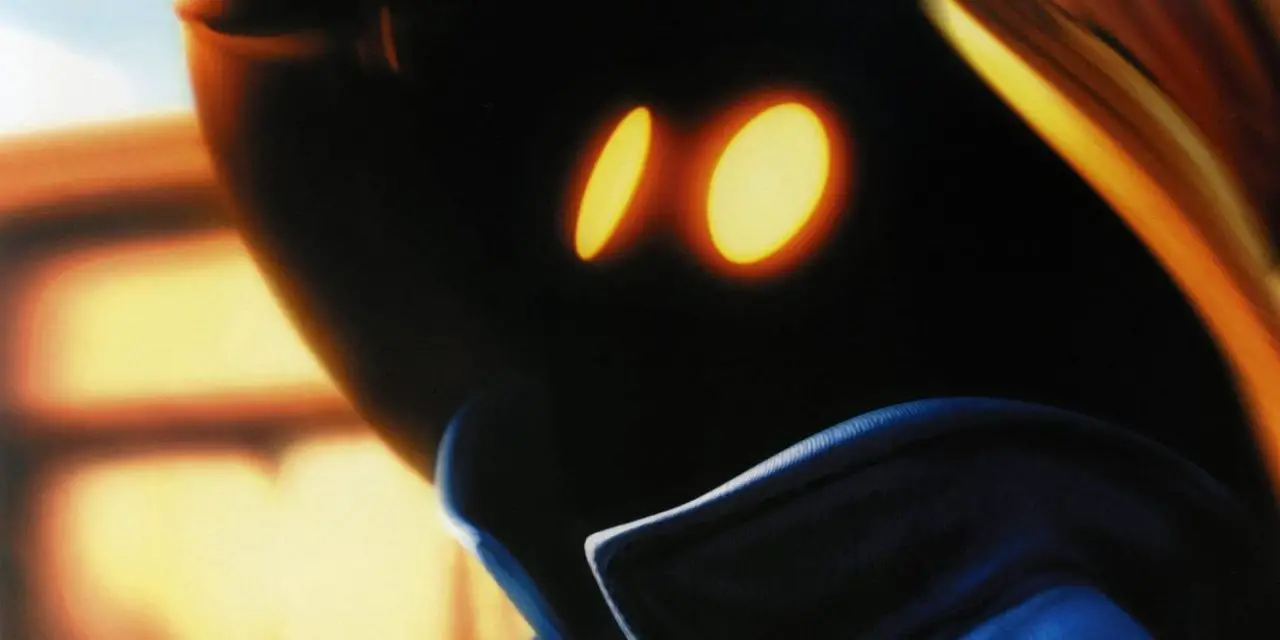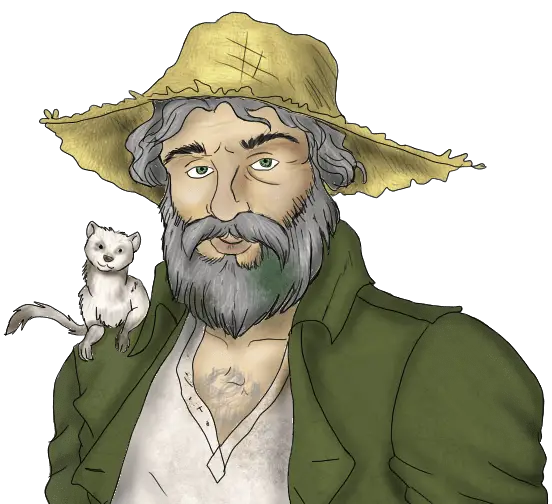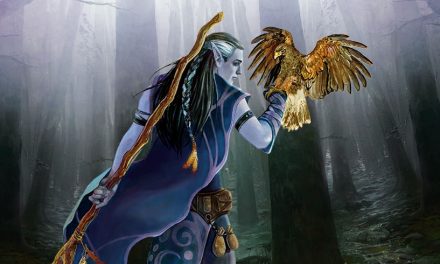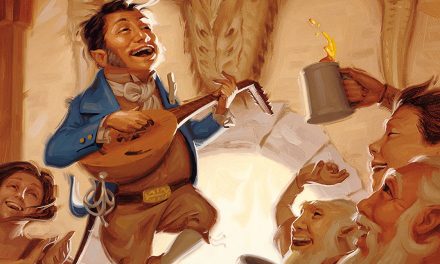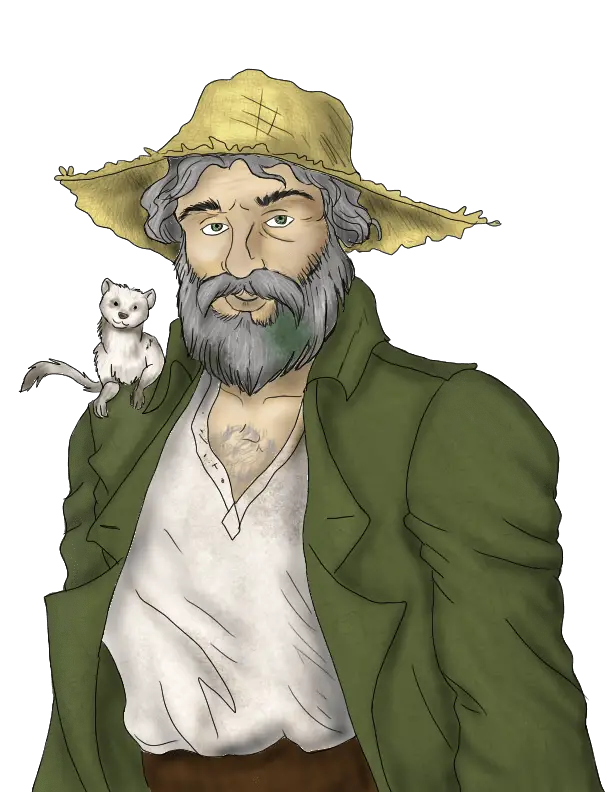Over two decades since its release, Final Fantasy IX remains a beloved classic in the RPG genre, renowned for its rich storytelling, unforgettable characters, and intricate world-building.
Each character in this epic tale brings their unique strengths, personalities, and abilities to the forefront, making them perfect candidates for an imaginative crossover with D&D 5e.
In this article, we’ll delve into the core party members and some notable characters from Final Fantasy IX, reimagining them as D&D 5e adventurers.
Prepare to embark on a journey that blends the fantastical realms of Gaia and the multiverse of D&D!
Zidane Tribal

We begin our journey through the world of Final Fantasy IX with its charming and nimble protagonist: Zidane Tribal.
With his quick wit, nimble fingers, and penchant for thievery, Zidane is an obvious choice for the Rogue class in D&D 5e. His skills in stealth and sleight of hand make him a quintessential Rogue, but there’s more to Zidane than just sneaking around.
While the Thief subclass might seem like a natural fit for someone with his background, Zidane’s swashbuckling style and charismatic bravado align perfectly with the Swashbuckler subclass. The Swashbuckler’s focus on agility, charm, and daring maneuvers mirrors Zidane’s own approach to both combat and life.
As a Swashbuckler, Zidane would excel in one-on-one combat, using his Fancy Footwork to avoid opportunity attacks and his Rakish Audacity to add his Charisma modifier to his initiative rolls. This combination of speed and charm allows him to dart in and out of combat with ease, striking foes with both precision and flair.
Zidane’s background as a member of the Tantalus Theater Troupe gives him a unique blend of skills that could be represented by the Entertainer background. This background reflects his history of performing and entertaining, as well as his knack for deception and disguise.
With his trusty daggers in hand, Zidane is always ready to leap into action, whether it’s to protect his friends or to steal a priceless treasure. Meanwhile, his light-hearted nature and unwavering loyalty make him a beloved member of the party.
Final Verdict: Rogue – Swashbuckler
Vivi Ornitier
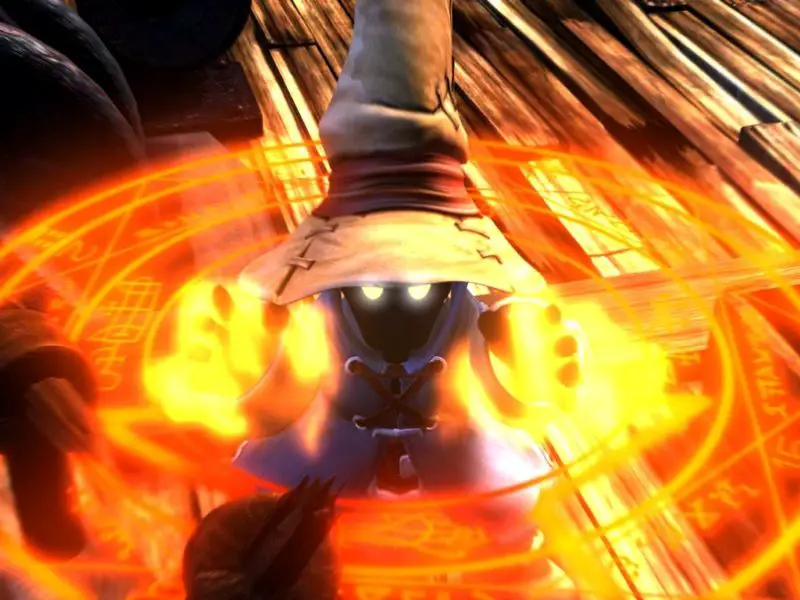
Next up is the endearing and powerful Black Mage of Final Fantasy IX: Vivi Ornitier.
Vivi’s journey is one of self-discovery and growth, as he learns to harness his innate magical abilities and come to terms with his identity.
While his role as a Black Mage might initially suggest an Evocation Wizard, Vivi’s story of learning to control his natural powers aligns more closely with the Sorcerer class in D&D 5e.
As a Sorcerer, Vivi’s magic is a part of him, flowing through his very being rather than being learned through rigorous study. This innate magical talent fits perfectly with the Wild Magic Sorcerer subclass. Vivi’s journey is one of mastering his natural gifts, and the Wild Magic Sorcerer’s theme of “controlled chaos” resonates with his character arc.
The Wild Magic Sorcerer’s features, such as Tides of Chaos and the Wild Magic Surge, reflect Vivi’s early struggles with controlling his powers. However, as he grows and gains experience, he learns to wield these abilities with greater precision and confidence.
This progression mirrors Vivi’s development from a timid and uncertain mage to a powerful and essential member of the party.
Vivi’s background could be represented by the Hermit background, reflecting his isolated upbringing and the personal quest for understanding his origins and purpose. The Hermit’s Discovery feature also ties in nicely with Vivi’s revelations about his true nature and the broader implications of his existence.
Vivi’s commitment to mastering his natural gifts and his journey of self-acceptance make him a compelling and truly iconic character. His spells, ranging from fireballs to lightning bolts, showcase the raw power that he learns to control, making him a must-have member of any party.
Final Verdict: Sorcerer – Wild Magic
Dagger / Princess Garnet

Next, we turn our attention to the graceful and determined Princess Garnet, also known by her alias, Dagger.
Dagger serves as the party’s primary healer for much of the game, embodying the role of a White Mage with her extensive repertoire of healing and support spells. However, her true strength lies in her ability to summon powerful eidolons, mystical beings that grant her extraordinary power in combat.
While it might seem intuitive to classify Dagger as a Cleric as an example of a traditional White Mage, her connection to these powerful eidolons suggests a different path.
This might be a hot take, but I’d say that the Celestial Warlock in D&D 5e captures the essence of her abilities and the unique bond she shares with the eidolons.
As a Celestial Warlock, Dagger’s healing capabilities are enhanced by her pact with these celestial beings.
The subclass provides her with spells like Cure Wounds and Healing Light, allowing her to fulfill her role as the party’s healer. While it may not be quite as adept at healing as other options, it’s certainly plenty capable of supporting the party in the ways they need the most.
Meanwhile, Dagger’s pact with the eidolons can be seen as an inherited bond rather than one she explicitly entered into. This fits the narrative of the Warlock class, where the source of power is often a powerful entity working through the character. In Dagger’s case, the eidolons are the source of her extraordinary abilities, making her a gifted healer and summoner.
Her background as a princess who is thrust into a life of adventure aligns well with the Noble background. This background reflects her royal heritage, her sense of duty, and her leadership qualities.
Dagger’s journey is one of growth and self-discovery, as she learns to harness the power of the eidolons within her. Her celestial bond and her commitment to protecting her friends make her an indispensable member of the party.
Final Verdict: Warlock – Celestial Patron
Adelbert Steiner
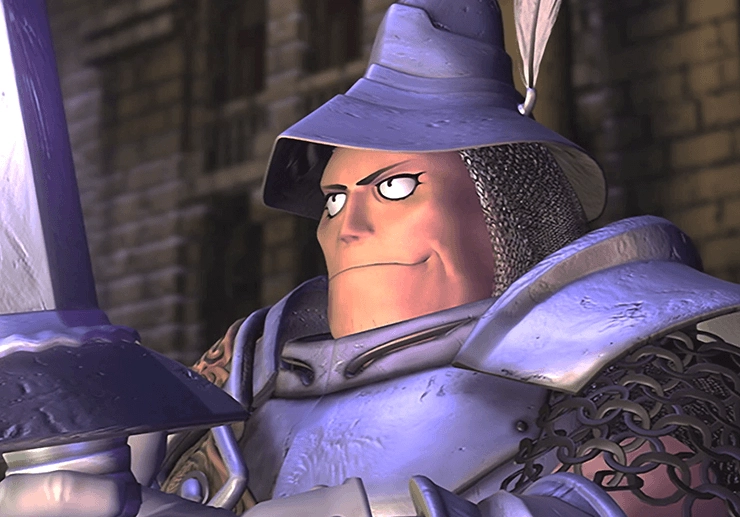
Now we come to the steadfast and honorable knight, Adelbert Steiner.
Initially, Steiner appears to be the perfect candidate for the Oath of the Crown Paladin, given his unwavering commitment to serving Queen Brahne and the kingdom of Alexandria. However, as the story progresses, Steiner’s journey of self-discovery and questioning of his loyalties suggests a different path.
Steiner’s role as the party’s tank and his defensive prowess make the Cavalier Fighter subclass a fitting choice. The Cavalier’s focus on protecting allies and controlling the battlefield aligns well with Steiner’s duty-bound nature and his desire to shield his comrades from harm.
As a Cavalier Fighter, Steiner would excel in drawing enemy attention and absorbing damage, allowing his allies to focus on their own roles. The Cavalier’s Unwavering Mark feature enables Steiner to mark foes, compelling them to attack him instead of his teammates. This defensive strength ensures that Steiner can fulfill his role as the party’s protector.
Steiner’s background as the captain of the Knights of Pluto is well-represented by the Soldier background. This background highlights his military training, leadership skills, and sense of duty. It also reflects his initial rigid adherence to orders and his eventual growth as he begins to question the true meaning of loyalty and justice.
While Steiner’s relationship with Vivi might require some homebrewing to fully capture their unique synergy, the Cavalier Fighter’s abilities provide Steiner with the survivability and battlefield control needed to protect his friends.
Final Verdict: Fighter – Cavalier
Freya Crescent
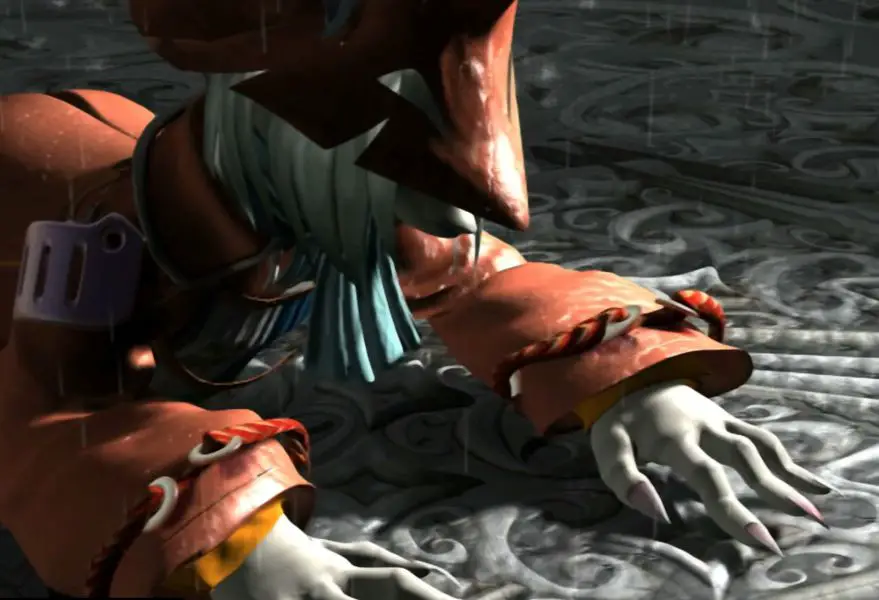
Next, we delve into the story of the valiant and tragic Dragon Knight (and my personal favorite character in FFIX), Freya Crescent.
Freya is a character defined by her unwavering commitment to protecting her people and their way of life, even in the face of immense personal loss.
Her dedication to her ideals and the oath she has sworn makes her an intriguing fit for the Paladin class in D&D 5e.
While Freya could align with several Paladin subclasses, the Oath of the Ancients stands out as the most fitting. This subclass emphasizes the protection of life, nature, and the ideals of hope and renewal, all of which resonate deeply with Freya’s character.
Despite the tragedies she endures, Freya remains steadfast in her mission to safeguard her homeland and its traditions.
As an Oath of the Ancients Paladin, Freya would draw upon the natural world and the timeless principles of life and light to fuel her powers.
The subclass’s features, such as Nature’s Wrath and Turn the Faithless, reflect Freya’s ability to channel the forces of nature to protect and heal. Additionally, the Aura of Warding feature provides her and her allies with resistance to spell damage, further enhancing her role as a protector.
Most importantly, Freya’s combat prowess is reflected in her choice of feats.
The Polearm Master feat allows her to make additional attacks with her signature weapon, while the Sentinel feat ensures that she can lock down enemies and prevent them from bypassing her to attack her friends. These feats, combined with her Paladin abilities, make Freya a formidable front-line defender.
Her background as a Dragon Knight of Burmecia aligns well with the Knight background, highlighting her noble heritage, martial training, and sense of duty. This background also underscores her loyalty to her people and her determination to protect them at all costs.
Final Verdict: Paladin – Oath of the Ancients
Eiko Carol

Next, we turn our attention to the spirited and precocious young summoner, Eiko Carol.
Eiko, despite her young age, possesses a deep connection to the ancient powers and mythology of her people.
With the blood of the summoners flowing through her veins, Eiko is a natural fit for the Sorcerer class in D&D 5e. Her innate magical abilities and her strong connection to the eidolons make her a powerful and versatile spellcaster.
While Eiko shares the role of White Mage and summoner with Princess Garnet, her unique abilities and focus set her apart. Eiko’s mastery of White Magic, including powerful spells like Holy, makes her both an exceptional healer and offensive spellcaster. This duality of healing and offensive magic aligns perfectly with the Divine Soul Sorcerer subclass.
As a Divine Soul Sorcerer, Eiko draws her magical power from a divine source, reflecting her heritage and the sacred bloodline of the summoners. This subclass grants her access to both the Sorcerer and Cleric spell lists, allowing her to cast powerful healing spells as well as potent offensive magic.
Additionally, Divine Soul features such as Favored by the Gods and Empowered Healing, further enhance Eiko’s abilities to protect and restore her allies.
Eiko’s connection to the eidolons and her role as a summoner are further emphasized by the Divine Soul subclass, as it represents her divine heritage and the celestial power she wields. Her ability to summon eidolons, while not as prominent as Garnet’s, still plays a significant role in her combat capabilities.
Eiko’s background as one of the last surviving members of her tribe and her deep connection to her heritage can be represented by the Acolyte background. This background reflects her upbringing in a sacred and mystical environment, her knowledge of ancient lore, and her devotion to the traditions of her people.
Final Verdict: Sorcerer – Divine Soul
Amarant Coral
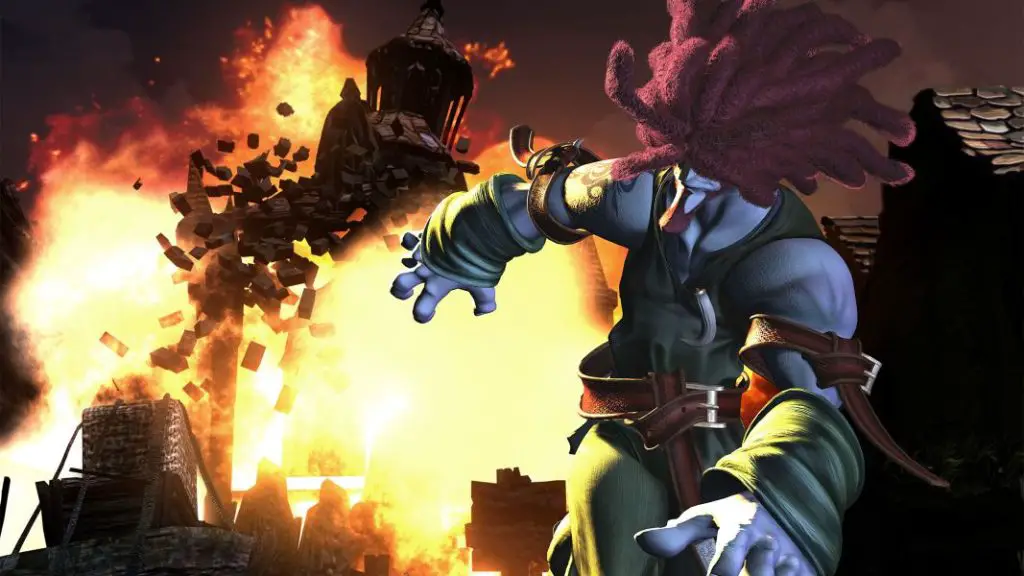
Now let’s delve into the enigmatic and formidable bounty hunter, Amarant Coral.
With his impressive agility, martial arts prowess, and unique combat style, Amarant is a natural fit for the Monk class in D&D 5e. His ability to dish out damage with both his fists and throwing weapons makes him a versatile and deadly combatant.
Amarant’s combat style is characterized by his use of both unarmed strikes and throwing weapons, making the Martial Arts feature of the Monk class a perfect fit. His agility and speed allow him to move fluidly through the battlefield, striking with precision and power.
While Amarant could seamlessly integrate into many of the Monk subclasses, the Way of Mercy stands out as the most fitting.
This subclass emphasizes both the healing and harming aspects of the Monk’s abilities, mirroring Amarant’s Chakra ability, which allows him to provide supplemental healing to his allies. This extra touch of healing can be a crucial lifeline in the heat of battle, helping to turn the tide without detracting from his offensive capabilities.
As a Way of Mercy Monk, Amarant would be able to use his Hand of Healing feature to restore hit points to his allies, reflecting his Chakra ability. This feature allows him to provide much-needed healing in critical moments, even while remaining focused on the attack.
Additionally, the Hand of Harm feature enables him to deal extra damage to his foes, showcasing his dual nature as both a healer and a warrior.
Amarant’s background as a bounty hunter and his solitary, wandering lifestyle align well with the Outlander background. This background highlights his survival skills, self-sufficiency, and experience living on the fringes of society. It also reflects his journey of self-discovery and his search for meaning and purpose.
There’s an extra unique application to the concept of the Way of Mercy Monk here as well. After all, Amarant’s journey is one of redemption and self-realization, as he learns to balance his destructive tendencies with his capacity for healing.
Final Verdict: Monk – Way of Mercy
Quina Quen
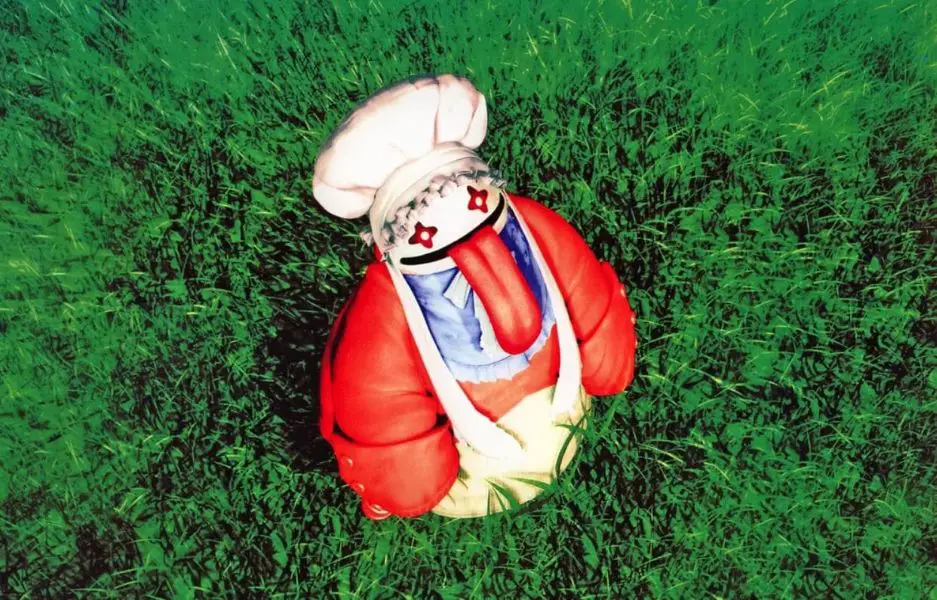
Finally, we explore the quirky and enigmatic Quina Quen, one of Final Fantasy IX’s most… unique… characters.
This one’s a little messy, but stay with me here!
Quina’s role as a Blue Mage, with the ability to learn and use the abilities of enemies, makes them a challenging character to translate into D&D 5e. However, their distinctive approach to magic and combat, along with their appreciation for life (albeit in a culinary sense), aligns surprisingly well with the Druid class.
As a Druid, Quina’s connection to nature can be flavored through their culinary adventures and the diverse abilities they acquire from their surroundings.
The Circle of the Land subclass, in particular, provides a fitting framework for Quina’s role as a Blue Mage. This subclass grants additional spells based on various biomes, allowing Quina to adapt and learn from different environments, much like how they learn Blue Magic in the game.
The Circle of the Land Druid’s Natural Recovery feature enables Quina to regain expended spell slots, ensuring they remain versatile and ready to use their unique abilities in any situation.
Meanwhile, the additional spells provided by the Circle of the Land subclass can be themed around the different areas Quina explores, reflecting their journey to broaden their horizons and taste the culinary delights of the world.
For example, starting with the Swamp spells can represent Quina’s origins in the Qu’s Marsh, while later acquiring spells from the Mountain, Forest, and Coast lists can symbolize their adventures and the new abilities they gain along the way. This thematic progression mirrors Quina’s growth and the expanding repertoire of Blue Magic they learn throughout the game.
While the Circle of the Moon Druid could also be a viable option, focusing on Wild Shape to mimic the abilities of encountered creatures, the Circle of the Land’s spell versatility and thematic alignment with Quina’s culinary journey make it a more fitting choice.
Quina’s background as a culinary enthusiast and their quest to taste and learn from the world around them can be reflected in the Outlander background. This background highlights their survival skills, wanderlust, and unique perspective on life. And you can absolutely bet they’re taking the Chef feat.
Final Verdict: Druid – Circle of the Land
General Beatrix
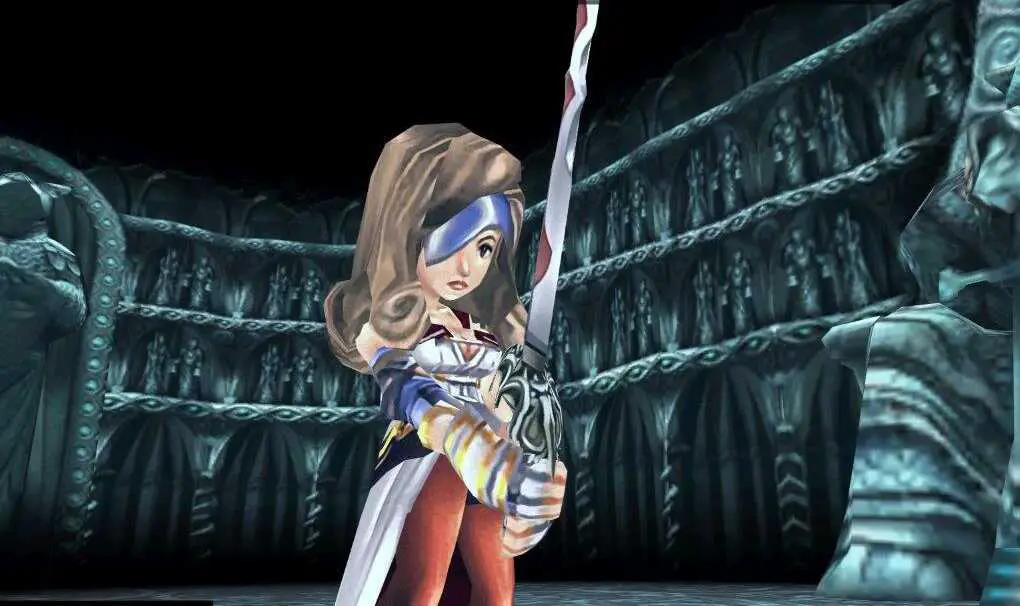
While General Beatrix might not be a permanent party member in Final Fantasy IX, her presence and impact on the story are undeniable. Her strength, loyalty, and sheer combat prowess make her one of the most fascinating characters in the game.
Beatrix is undoubtedly a Paladin, wielding her iconic sword (Save the Queen) with devastating effect in combat.
Considering how her attacks hit like a truck, upgrading her to a greatsword and taking the Great Weapon Master feat would be a natural choice for her. This allows her to unleash some massively powerful strikes and take down enemies with ease.
Beatrix’s unwavering loyalty to Queen Brahne, even as the queen descends into madness, aligns her with the Oath of the Crown Paladin.
Similar to when we discussed Steiner, this subclass emphasizes loyalty, duty, and the protection of the realm, all of which resonate with Beatrix’s character. The Oath of the Crown provides her with abilities that bolster her allies and maintain order on the battlefield.
However, Beatrix’s reputation as a fearsome warrior and her ability to instill fear in her enemies also makes the Oath of Conquest a fitting choice. This subclass focuses on dominating the battlefield and breaking the will of foes, reflecting Beatrix’s sheer force of nature and her ability to send enemies running at the mere mention of her name.
Though, in addition to her Paladin abilities, Beatrix is a gifted spellcaster, wielding powerful magic that goes beyond the typical Paladin kit. This makes her a prime candidate for multiclassing into Cleric. The War Domain Cleric, in particular, complements her combat prowess and commanding presence.
As a War Domain Cleric, Beatrix gains access to powerful spells that enhance her combat abilities and allow her to take on a commanding role in battle. The War Priest feature allows her to make additional weapon attacks, while the War God’s Blessing feature lets her boost her allies’ attack rolls, showcasing her leadership and tactical acumen.
Combining Paladin and War Domain Cleric levels, Beatrix becomes a formidable force on the front lines, capable of both dealing and mitigating massive amounts of damage. Her ability to bolster her allies and dominate her enemies makes her a true force to be reckoned with.
Beatrix’s background as the loyal and powerful general of Alexandria aligns well with the Soldier background. This background highlights her military training, leadership skills, and unwavering sense of duty.
Final Verdict: Paladin (Oath of the Crown or Oath of Conquest) / Cleric (War Domain)
Kuja
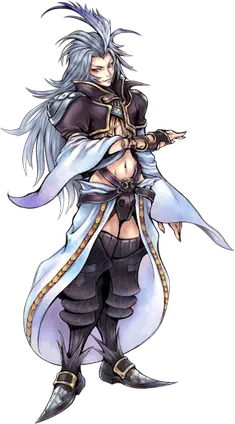
Finally, we delve into the intricate and formidable antagonist of Final Fantasy IX: Kuja.
Kuja is a character engineered to be the perfect “Angel of Death,” and his mastery of magic and charismatic manipulation make him a natural fit for the Sorcerer class in D&D 5e. His ability to weave potent spells and his commanding presence align perfectly with the traits of a terrifyingly powerful Sorcerer.
Kuja’s approach to combat is based on raw magical power, designed to overwhelm his foes with devastating spells. His affinity for dragons, exemplified by his iconic Silver Dragon mount, makes the Draconic Bloodline Sorcerer subclass an ideal choice. This subclass not only enhances Kuja’s spellcasting abilities but also reflects his seriously amped up arcane power.
As a Draconic Bloodline Sorcerer, Kuja would have an innate toughness that sets him apart from other spellcasters. The Draconic Resilience feature grants him additional hit points and a higher Armor Class, showcasing his ability to take hits and keep fighting. This resilience is evident in the game, where Kuja withstands powerful attacks, including surviving Bahamut’s devastating assault.
The Draconic Bloodline subclass also enhances Kuja’s spellcasting with features like Elemental Affinity, allowing him to add his Charisma modifier to the damage of spells that match his chosen draconic ancestry’s element. This increase in raw magical power aligns with Kuja’s preference for overwhelming his enemies with sheer force.
Kuja’s background as a manipulative and charismatic figure can be represented by the Noble background. This background highlights his high social standing, his ability to influence others, and his strategic mind. It also reflects his upbringing and the role he was designed to play.
Kuja’s journey as an antagonist is marked by his quest for power and his complex motivations.
His combination of raw magical power, draconic resilience, and charismatic manipulation makes him a formidable and memorable foe that’s screaming to be brought to the D&D table!
Final Verdict: Sorcerer – Draconic Bloodline
Conclusion – Making the Characters of Final Fantasy IX in D&D 5e
Thank you for joining us on this journey through Gaia and the multiverse of D&D. But, of course, this is just one interpretation of bringing the fantastic characters of FFIX into D&D.
We want to hear from you! How would you recreate the beloved characters of Final Fantasy IX in your D&D campaigns? Do you have different class or subclass ideas that you think fit even better? Share your thoughts and builds in the comments below!
Want more Final Fantasy and D&D crossover content? Why not check out our article making the characters of Final Fantasy 7 in D&D 5e!
And if you enjoyed this article, be sure to subscribe to the Tabletop Joab newsletter. Stay updated with the latest articles, tips, and discussions about all things tabletop gaming. Let’s keep the adventure going!
